Recent surveys of labor sentiment point to potential problems. For instance, last week, we shared the New York Fed consumer expectations survey, which showed that more people fear being unemployed in the next four months than at any time since 2014. Furthermore, the University of Michigan survey section regarding expected changes in household income is nose-diving. Yesterday, the consumer confidence survey by the Conference Board showed an improvement in overall sentiment, but its labor differential gauge continues to deteriorate. As shown in the Tweet of the Day section below, downward trends in this indicator have been associated with recessions.
According to the BLS, 132 million workers are in the services sector, accounting for about 80% of private employment. Therefore, labor sentiment in the services sector is vital to track to help us forecast how the Fed might manage monetary policy going forward. To that end, the graph below, is a composite of the various Fed regional service sector employment indicators. Unlike those noted above, the regional Fed surveys are from hiring managers, not employees. Therefore, it sheds a slightly different light on the topic. As shown, the composite has fallen into negative territory. Over the last 20 years, the only times it has been negative have been leading up to recessions and during them.
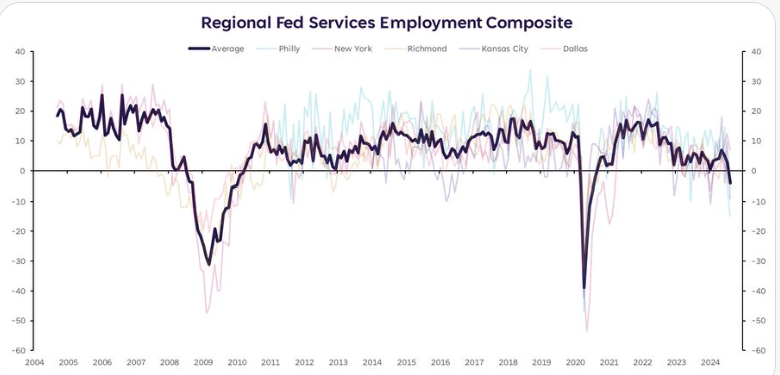
What To Watch Today
Earnings

Economy

Market Trading Update
Yesterday, we discussed the more extreme overbought conditions in Gold. Interestingly, on that same “monthly” chart, the stock market is exhibiting many of the same signals. While the monthly Relative Strength Index is not at extremes just yet, it is beginning to approach levels that have previously preceded larger market corrections.
However, there is an important caveat. Again, this is a monthly chart, which means things move much more slowly. Therefore, while the overbought conditions and deviations from longer-term means are present, they can remain the case for several months to a couple of years. As such, you can not use such a chart to make short-term portfolio decisions. However, it does suggest that investors should be aware of a risk on the horizon. Eventually, these more extreme conditions will matter, but as we have stated, an unexpected, exogenous catalyst will be needed to begin the reversion.
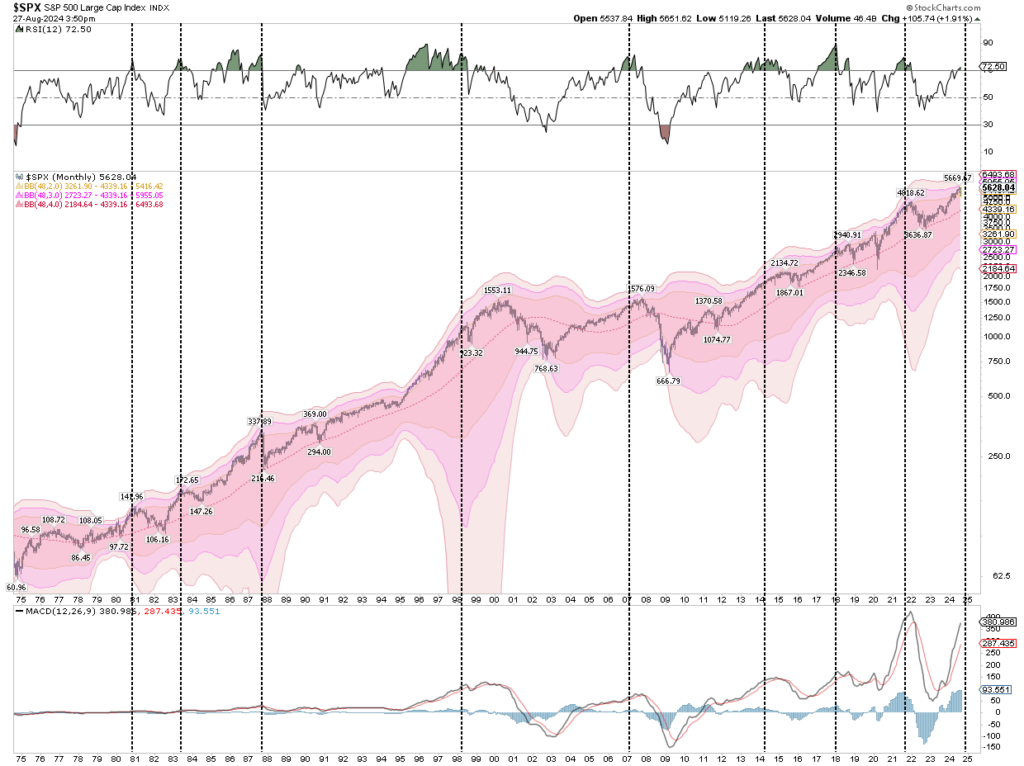
This afternoon, the markets will receive earnings from Nvidia (NVDA), which will arguably set the tone for tomorrow’s trading. If earnings meet or beat expectations, we could see the markets break out to new highs. However, a larger risk is that earnings “disappoint” rather lofty expectations, which could put downward pressure on an already overbought and extended market. Such is why we reduced our holdings in NVDA yesterday to hedge that potential risk.

More On Gold Fever
Yesterday’s Commentary touched on the risk of gold, given its recent high correlation with many other speculative assets. Furthermore, we cautioned you based on its technical situation. Per the Commentary:
In the last 50 years, there have only been three (3) other occasions when Gold was this extended, overbought, and deviated from long-term moving averages. As shown, Gold is currently trading four (4) standard deviations above its four-year moving average. Each time Gold has previously achieved such conditions, the eventual reversion was quite large.
The graph below serves as another warning that something is awry. It shows how the inflows and outflows of gold ETFs tend to track the price of gold closely. However, recently, the two have sharply diverged. One rationale is that retail is not participating in the rally. Another states that institutions or central banks are buying gold via the gold ETFs. They convert ETF shares into physical gold via the ETF managers. It could also be an arbitrage opportunity or something else entirely. However, what matters most to gold investors is how might the “alligator jaws” resolve themselves.
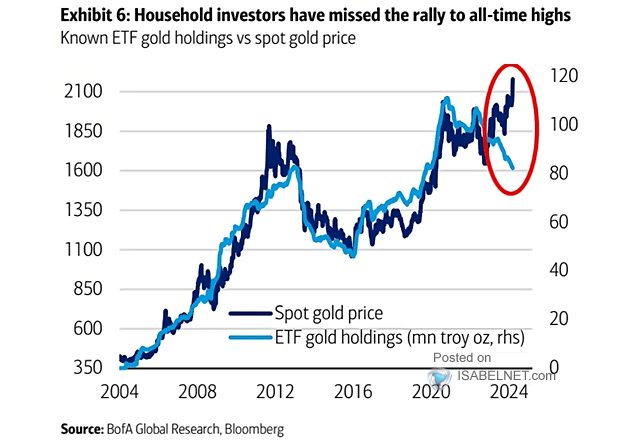
Overbought Conditions Set Up Short-Term Correction
That leaves the market vulnerable to a correction. When an event occurs, there are “willing buyers” for every transaction—just at much lower prices.
While the “Yen Carry Trade” quickly resolved itself, that risk has not been removed. The Bank of Japan is still intent on hiking interest rates, while the Federal Reserve is lowering them. At the same time, the Dollar has been declining, and the Yen Has Been increasing. So far, this has not triggered another “margin call” for hedge funds. However, should the underlying dynamics continue, the risk of another “event” clearly increases.
With markets overbought and sentiment bullish, such is a good time to rebalance portfolios and reduce excess risk.
Trade accordingly.
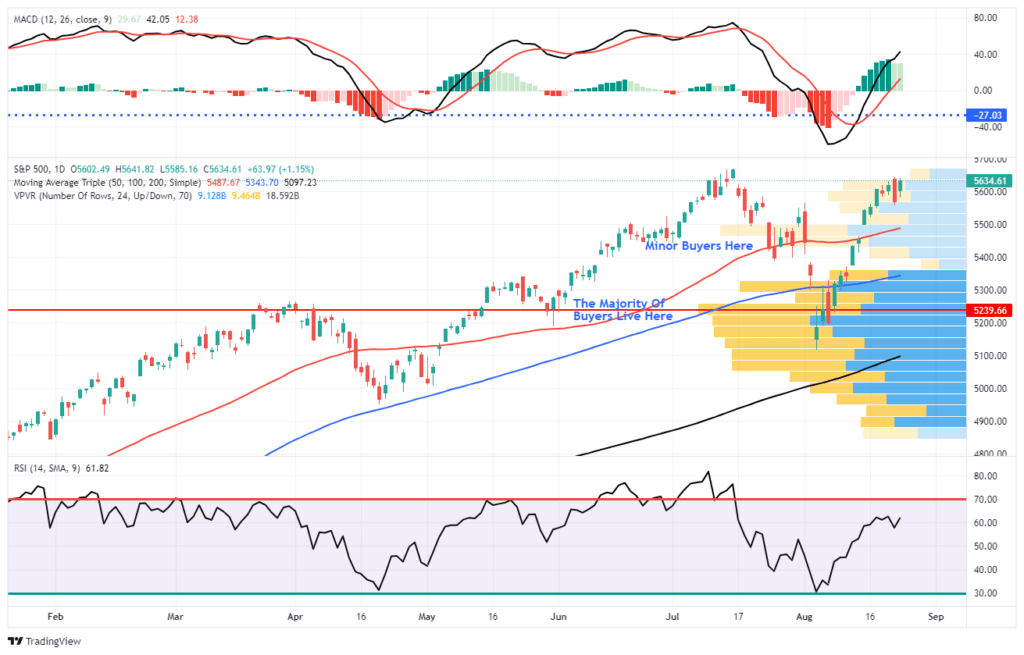
Tweet of the Day
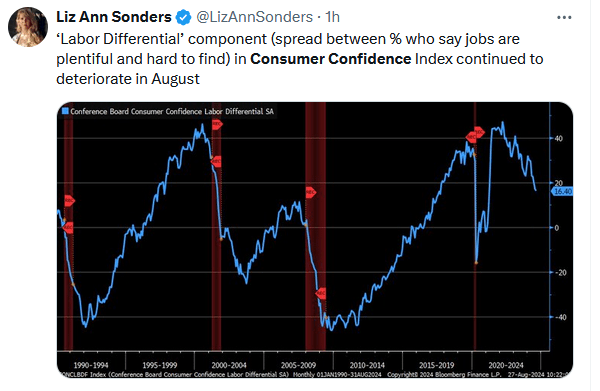
“Want to achieve better long-term success in managing your portfolio? Here are our 15-trading rules for managing market risks.”
Please subscribe to the daily commentary to receive these updates every morning before the opening bell.
If you found this blog useful, please send it to someone else, share it on social media, or contact us to set up a meeting.


